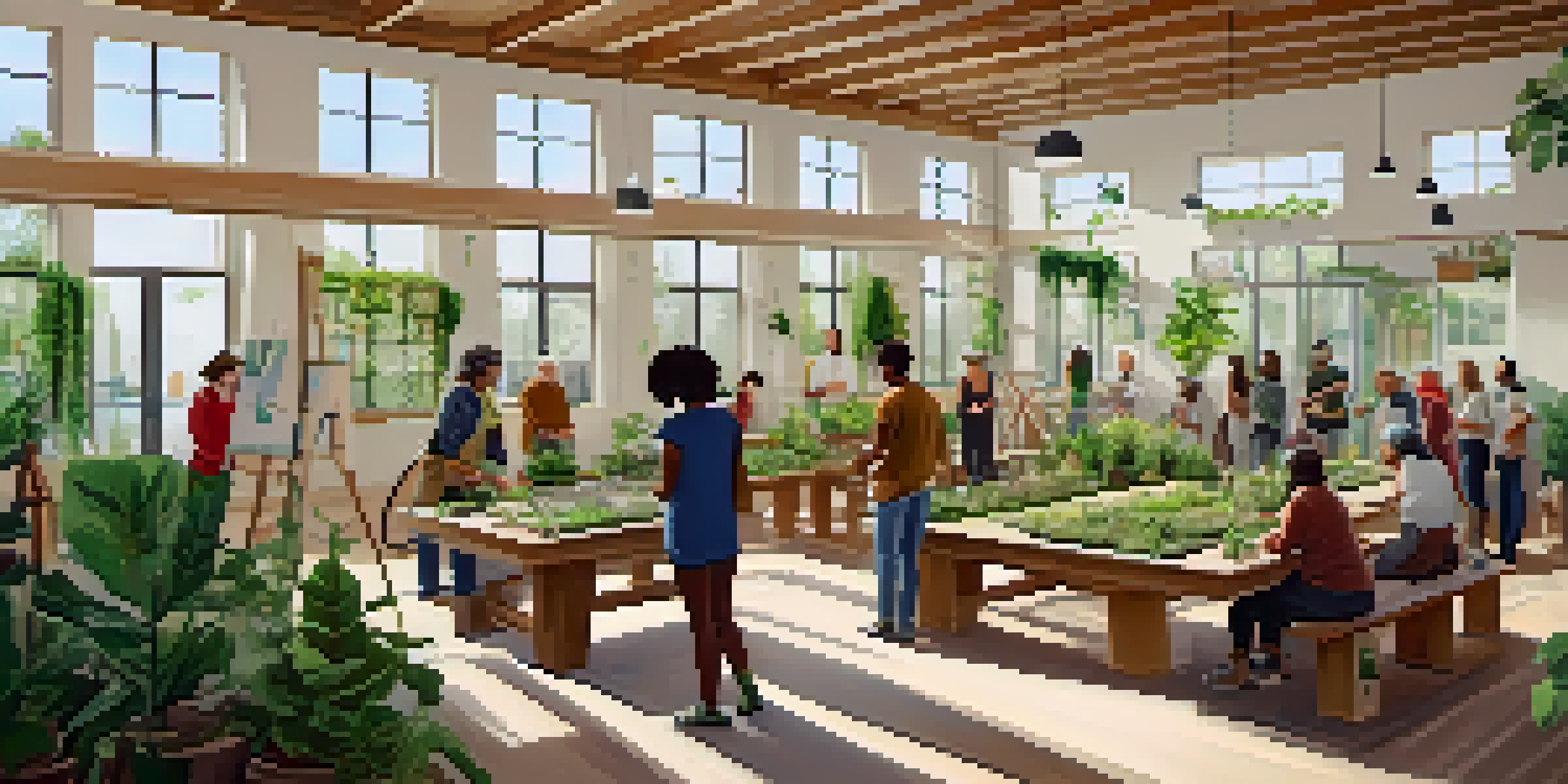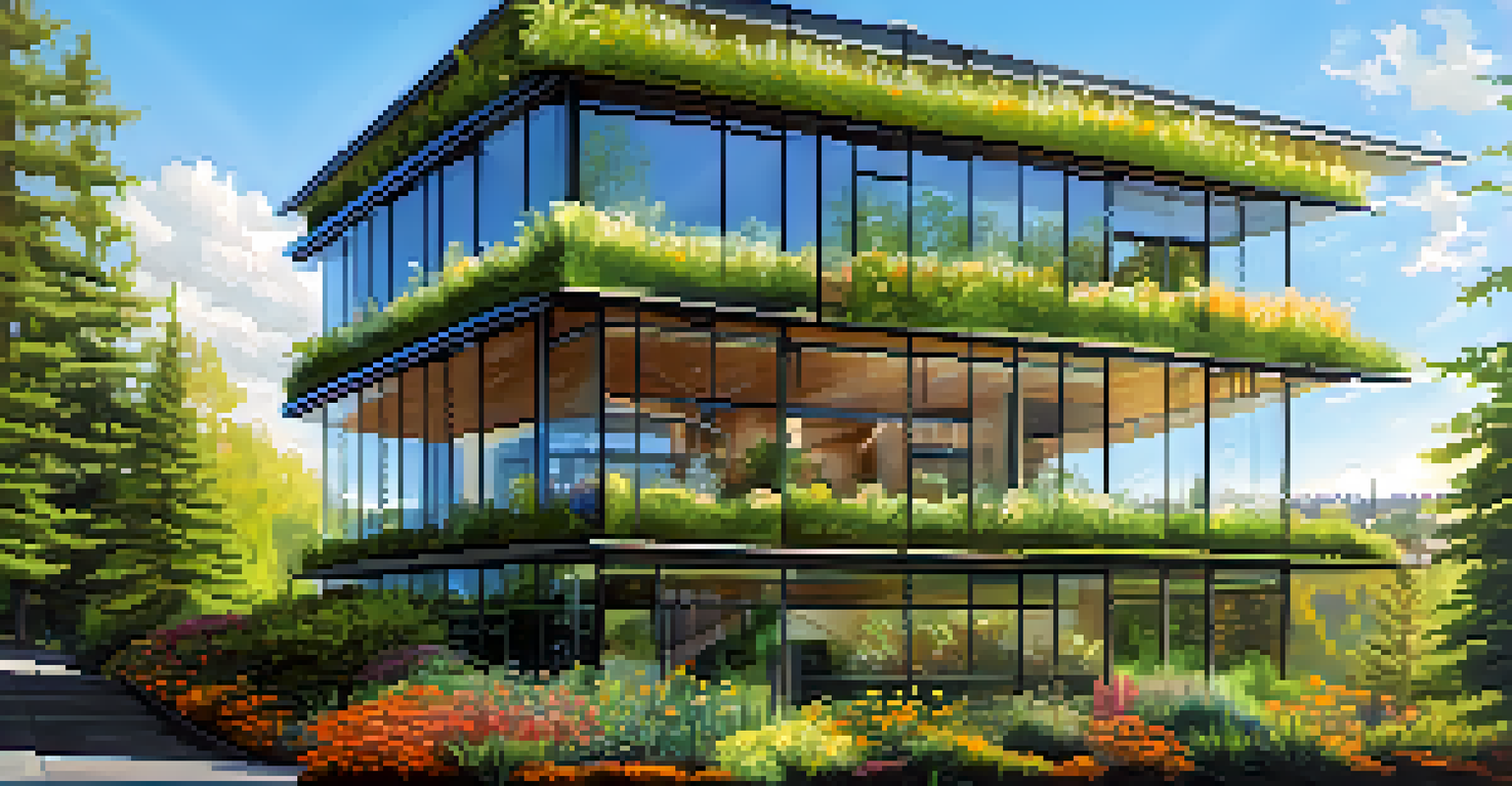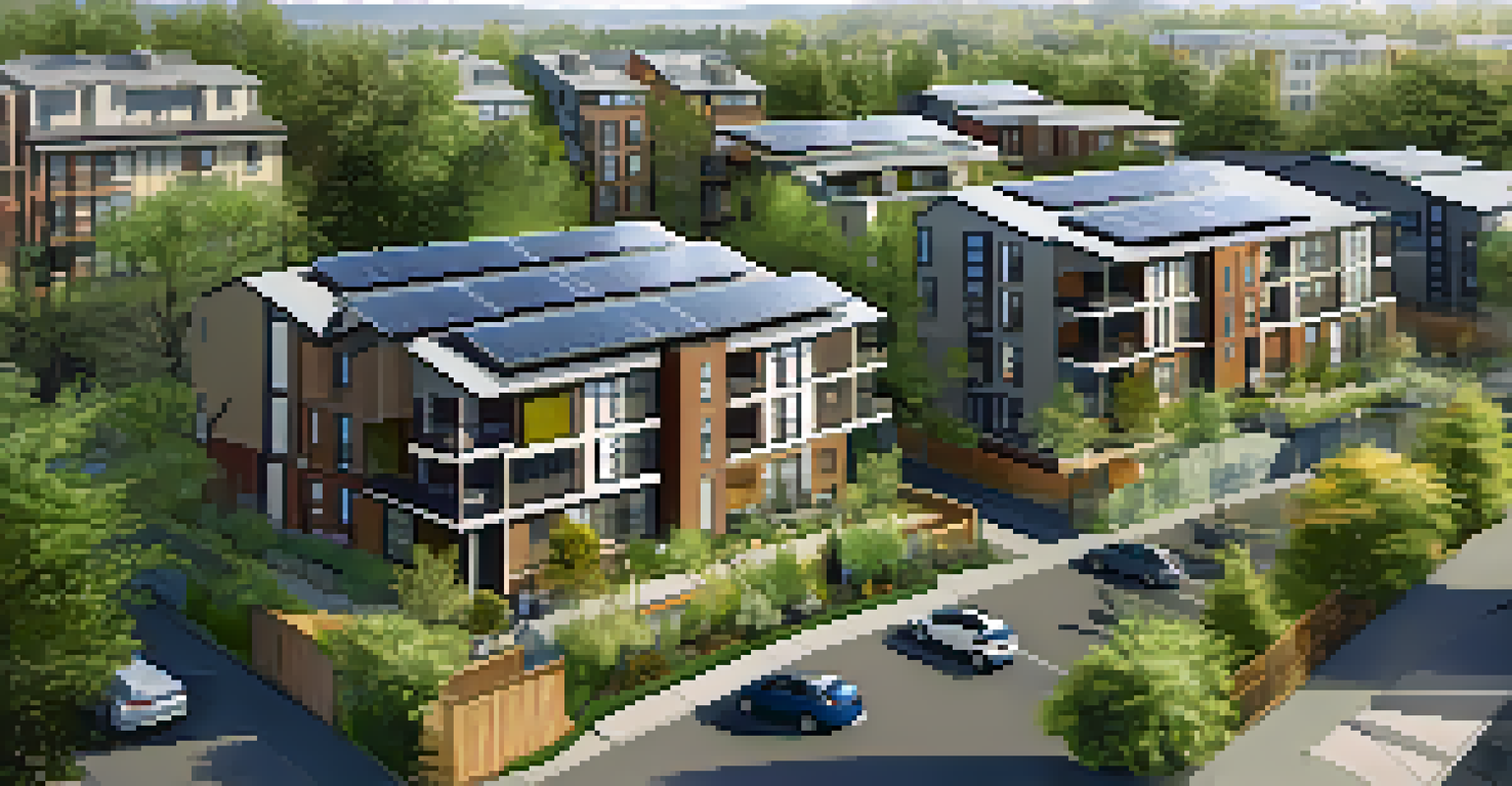Green Architecture: Portland's Sustainable Building Practices

Introduction to Green Architecture in Portland
Portland, Oregon, is often at the forefront of green architecture, embracing sustainable building practices that reflect its commitment to the environment. Known for its lush landscapes and progressive values, the city integrates eco-friendly materials and designs into its urban fabric. This article delves into the innovative strategies that make Portland a model for sustainable living.
Sustainability is no longer about doing less harm. It's about doing more good.
Green architecture goes beyond just aesthetics; it focuses on creating spaces that minimize environmental impact while maximizing energy efficiency. In Portland, this approach is prevalent in both residential and commercial developments, showcasing a range of projects that prioritize sustainability. By adopting principles of green design, the city aims to create a healthier environment for its residents.
As we explore Portland’s sustainable building practices, we’ll highlight notable projects, community initiatives, and the overall philosophy that guides the city's green movement. From energy-efficient buildings to green roofs, Portland demonstrates how architecture can harmonize with nature and serve the community.
Key Principles of Sustainable Building
At the heart of sustainable building practices are several key principles aimed at reducing the carbon footprint. These include energy efficiency, water conservation, and the use of sustainable materials. By following these guidelines, architects and builders can create structures that not only meet the needs of their occupants but also respect the planet.

For instance, energy-efficient design involves maximizing natural light and ventilation while minimizing the need for artificial heating and cooling. This not only lowers energy consumption but also creates healthier living environments. Rainwater harvesting and greywater recycling are also components that contribute to water conservation in Portland's buildings.
Portland Leads in Green Architecture
Portland is at the forefront of sustainable building practices, integrating eco-friendly materials and designs into its urban landscape.
Ultimately, these principles ensure that sustainable buildings are not just environmentally friendly but also cost-effective over time. By investing in green architecture, Portland is paving the way for a future where sustainability is the norm rather than the exception.
Portland's Notable Green Projects
Portland boasts several standout projects that exemplify green architecture, each contributing to the city’s sustainable landscape. One notable example is the Bullitt Center, often referred to as the greenest commercial building in the world. This structure features a living roof, rainwater harvesting, and solar panels that provide all its energy needs.
The architecture of the future must be green. It must be a system that can produce and sustain life.
Another impressive project is the EcoFlats, which showcases energy-efficient design and sustainable materials. These multifamily units not only reduce energy costs for residents but also promote a sense of community among neighbors. Such projects highlight how innovative design can lead to both environmental and social benefits.
These examples serve as inspiration for future developments in Portland and beyond. They demonstrate that sustainability can be seamlessly integrated into architecture, creating spaces that are both functional and environmentally responsible.
Community Involvement in Sustainable Practices
One of the unique aspects of Portland’s approach to green architecture is the strong emphasis on community involvement. Residents are encouraged to participate in planning and design processes, ensuring that developments meet local needs and preferences. This collaborative spirit fosters a sense of ownership and responsibility towards sustainability.
Community initiatives, such as neighborhood clean-up days and workshops on sustainable living, further engage citizens in eco-friendly practices. These events not only educate residents about the importance of green architecture but also promote a culture of sustainability. Through these efforts, Portland is cultivating a community that values environmental stewardship.
Community Drives Sustainability Efforts
Strong community involvement in planning and initiatives fosters a culture of environmental stewardship and ownership in Portland.
This focus on community involvement enriches the city's green architecture movement, making it a collective effort rather than an isolated initiative. It empowers residents to take an active role in shaping their environment and promotes a lifestyle that prioritizes sustainability.
Challenges Facing Green Architecture
Despite its advancements, Portland faces challenges in its journey towards complete sustainability in architecture. One significant hurdle is the cost associated with sustainable materials and technologies, which can deter some developers and homeowners from pursuing green options. While these investments often pay off in the long run, the initial expenses can be a barrier.
Additionally, navigating regulations and building codes can be complex, especially when trying to implement innovative designs. Some builders may find it challenging to balance creativity with compliance, potentially stalling progress. Addressing these barriers requires collaboration between city officials, architects, and the community.
Despite these challenges, Portland remains committed to overcoming obstacles in green architecture. By fostering dialogue and providing resources, the city continues to support sustainable building practices and encourages developers to embrace eco-friendliness.
The Role of Technology in Sustainable Design
Technology plays a crucial role in advancing sustainable architecture in Portland. Innovations such as smart building systems and energy modeling software allow architects and builders to design more efficient structures. These technologies help track energy consumption and optimize resources, ensuring that buildings operate at peak efficiency.
Moreover, advancements in renewable energy sources, such as solar and wind power, have made it easier for buildings to generate their own energy. Many Portland developments are equipped with solar panels and energy storage systems, making them less reliant on traditional power grids. This shift towards self-sufficiency reflects the city's commitment to sustainability.
Technology Fuels Sustainable Design
Innovative technologies in energy efficiency and renewable sources are enhancing the sustainability of architecture in Portland.
As technology continues to evolve, it opens up new possibilities for green architecture. By embracing these innovations, Portland is not only enhancing its buildings' sustainability but also setting a precedent for other cities to follow.
The Future of Green Architecture in Portland
Looking ahead, the future of green architecture in Portland appears bright and full of potential. With ongoing innovations and community engagement, the city is poised to lead the way in sustainable building practices. The integration of climate-responsive designs and renewable energy sources will continue to shape the urban environment.
Portland's commitment to sustainability will likely influence future zoning regulations and building codes, encouraging even more eco-friendly developments. As the city adapts to changing environmental conditions, green architecture will play a vital role in ensuring resilience and livability for its residents.

Ultimately, the journey towards sustainable architecture in Portland is an evolving one, marked by collaboration, innovation, and a shared vision for a greener future. By prioritizing sustainability, Portland not only enhances the quality of life for its residents but also sets a global example of how cities can thrive in harmony with nature.